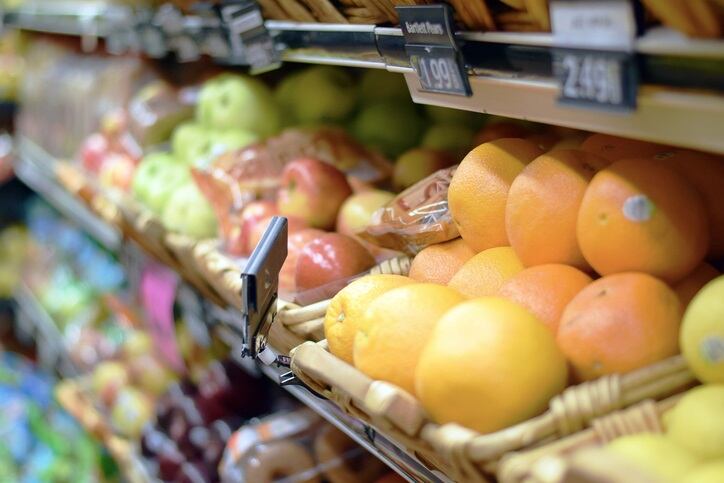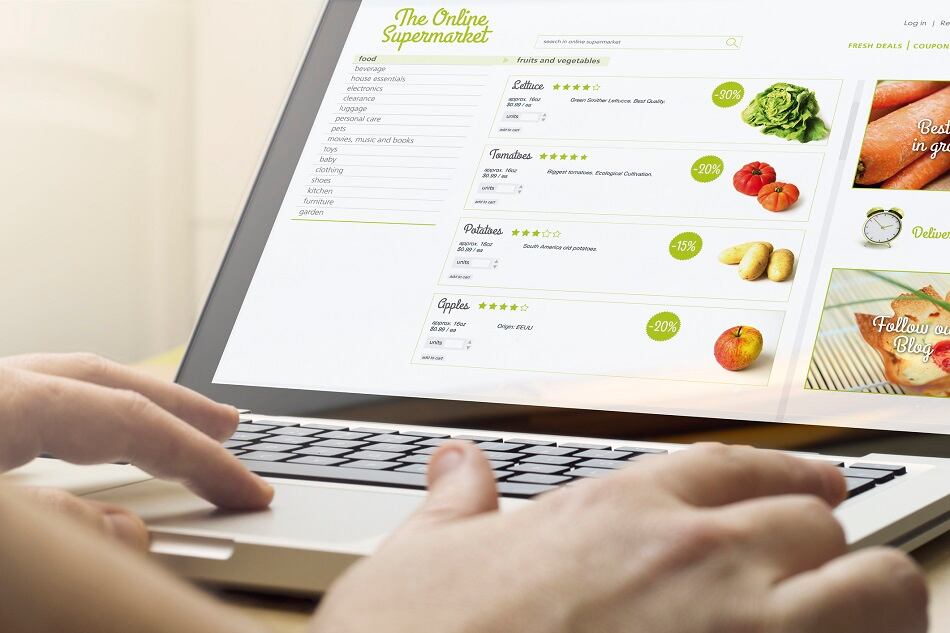Currently ecommerce accounts for only about 3% of grocery sales, or about $33b in 2019, but this should triple in the next three years, thanks to substantial investments by retailers in creating a seamless shopping experience between online and brick-and-mortar stores, the full services sales and marketing company notes in its recently released report Online Grocery Pickup Accelerate.
These efforts are helping brick-and-mortar retailers close the gap with Amazon, which stole the lead online with its acquisition of Whole Foods Market and agile use of consumer data cultivated from its databases. According to Acosta, Walmart led the way with growth by attracting 207% more ecommerce buyers from January 2017 to January 2019, compared to 122% by Target, 172% by Kroger and only 29% by Amazon.
Most of these new shoppers likely are millennials, which Acosta notes spend 40% of their household’s monthly grocery spending on purchases online. This is by far the largest percentage of all generations, followed closely by Gen Z at 37%, Gen X at 32% and Boomers at only 20%.
As more Millennials have children in coming years they likely will embrace online grocery shopping more based on Acosta’s finding that children in the household make the service more appealing. Specifically, it notes 44% of households with children use the service compared to only 15% without children.
The time savings and convenience of online shopping and online grocery pickup is a major attraction to Millennials, one of whom told Acosta that the most valuable aspect of online grocery shopping and pickup is that “it saves me time walking around the store to find what I need, especially on busy weekdays.”
This was echoed by older shoppers as well, with Boomers adding that online grocery shopping and pickup also helps with budget management and struggles with pulling heavy carts and loading products into the car.
Despite these added benefits, Boomers currently are least likely to use ecommerce and online grocery pickup services – a gap that represents significant opportunity for retailers, suggests the report. To pull in more older consumers, Acosta recommends that retailers play up the convenience factor for older consumers. This includes highlighting the ease with which online grocery pickup shoppers can refer to past orders to build a new cart – a practice that 52% currently follow. In addition, older consumers who increasingly are on fixed incomes likely would respond well to retailers emphasizing how easy it is to track spending and stay in budget with online shopping.
Product assortment gives potential online shoppers pause
Another roadblock for online grocery shopping is consumer concerns about product quality, availability and the ability to quickly and accurately select the items they want online, according to Acosta.
For example, it notes that 72% of online grocery shoppers still prefer to buy certain items, including fresh fruit, vegetables and meat, in store, and 53% struggle to find the product size they want when ordering online due to lack of availability or labeling ambiguity.
To address these issues, Acosta recommends that retailers incorporate the ability to profile fresh foods, such as ripeness, empower order pickers to use their discretion to select the highest quality items and add same-page drop-down boxes that allow shoppers to clearly and easily select various sizes.
Consumer frustration with out-of-stocks and dissatisfaction with substitutions also discourages some shoppers from buying groceries online, according to Acosta. It found 45% of online grocery shoppers have experienced out-of-stocks and while 51% say they are typically satisfied with the item substitution, 21% said they had some level of dissatisfaction and 28% said they were neutral.
Acosta recommends retailers eliminate the ability to order out-of-stock options or if that is not possible then to select ‘no substitutions’ when something is not available.
Encourage larger orders
While many consumers consider it a positive that they can stay within their budget and not deviate from their shopping list when ordering online, this is holding back many retailers’ ability to boost basket size in the same way they can in stores.
According to Acosta, 33% of grocery shoppers hardly ever make impulse purchases when ordering online, compared to only 5% when in store.
The best way to trigger more impulse purchases online is to feature products as part of a bundle or a complement to what is being purchased, add high quality images or appealing packaging to product pages online and use advertising on the retailers website or ap to draw attention to specific products, suggests Acosta.




